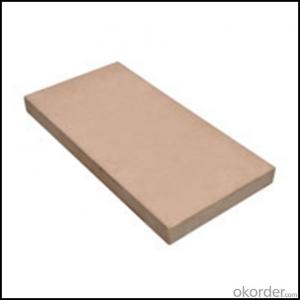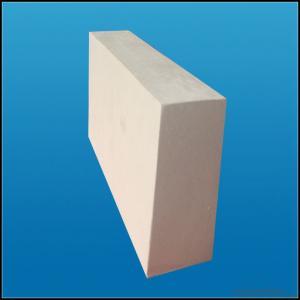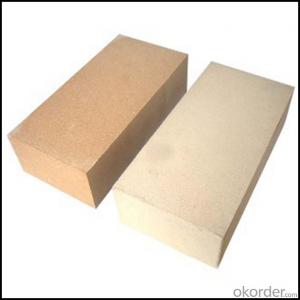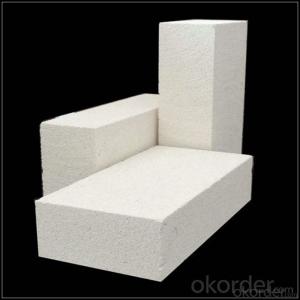Fireclay Bricks High Alumina Refractory Brick
- Loading Port:
- China main port
- Payment Terms:
- TT OR LC
- Min Order Qty:
- 1 m.t
- Supply Capability:
- 2500 m.t/month
OKorder Service Pledge
OKorder Financial Service
You Might Also Like
Acid Resistant Brick
CMAX firebricks are classified under temperature between 1300℃ to 1700℃, manufactured from high purity alumina clay.
High alumina refractory brick is dense shaped refractory material. With high refractoriness and mechanical behavior under high temperature, refractory brick is the necessary material of high-temperature services, mainly used for industrial furnaces and kilns and thermal equipment.
High alumina refractory brick has wide applications, mainly used in metallurgy, construction(cement and glass), petroleum, chemical industry, electric power and machine building.
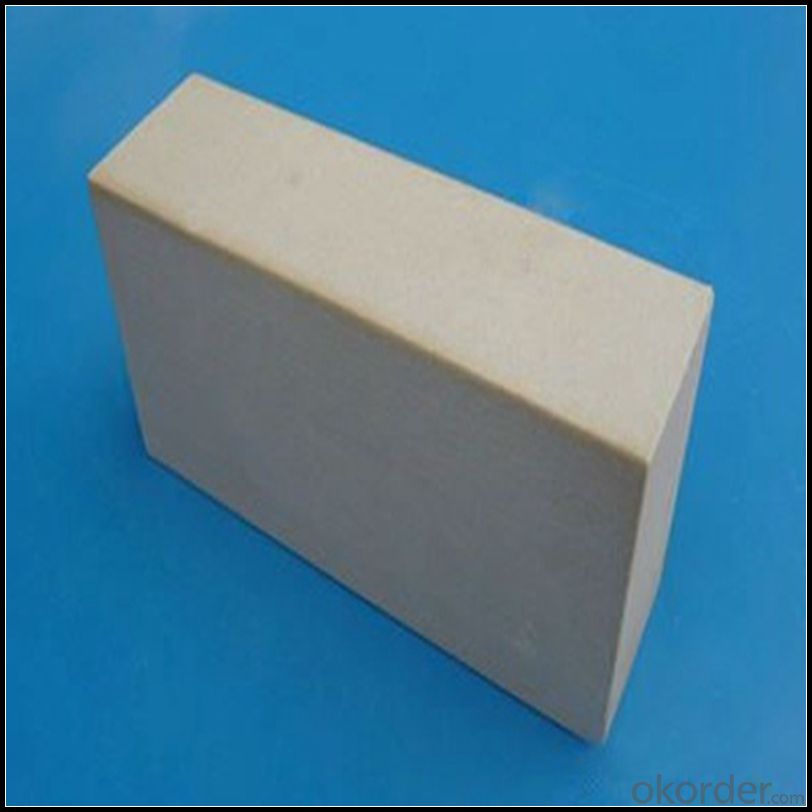
Features
Certificate of Quality for each parcel
Raw material from China, Australia and Germany
Good price
Many sizes in stock ; Making tiles accroding to your drawings
Resistance: Excellent
Quick delivery& Professional service
Excellent thermal stability
High refractoriness under load
Excellent thermal shock resistance
High refractoriness
High strength
Low thermal conductivity
Slag resistance to acid and alkaline slag erosion
Application
Data Sheet
Classification Temperature (℉/℃) | 3000/1650 |
Bulk Density (g/cm3 ) | ≤1.0 |
Thermal Conductivity | |
800℃, W/m.K | ≤0.39 |
1000℃, W/m.K | ≤0.43 |
1200℃, W/m.K | ≤0.48 |
Reheating Linear Change (%) | 1550℃×12h |
≤0.9 | |
Chemical Composition (%) | |
Al2O3 | ≥75 |
Fe2O3 | ≤0.5 |
Packaging & Shipping
Packaging Details:Be packed in fumigated wooden pallets
Delivery Detail: 30 days after order

Our Services
Optimum solution and product supply of refractories for high temperature industries, such as iron steel, non-ferrous, petrochemical and building materials.
Engineering design, contract and consult for refractories, and civil architecture design.
Research, development, manufacture and sale of superhard materials.
R&D, manufacture and sale of special packing materials for export.
Inspection, supervision and arbitration of refractories.
Consultation and services in refractories information.
Training and cultivation of high-level talents in refractories profession
Sales Network

Company Information
CNBM (China National Building Material) Group is the largest comprehensive building materials group in China that in integrate scientific research, manufacturing and logistics into one entity. The largest building materials and equipment specialists in China. Upon State Council approval, today CNBM owned more than 300 subordinate manufacturing factories and servicing companies. There are 6 fully owned public listed companies and 11 partially owned with substantial shares public listed companies. In many of these fields, CNBM is playing the leading role in the building industry in the country.
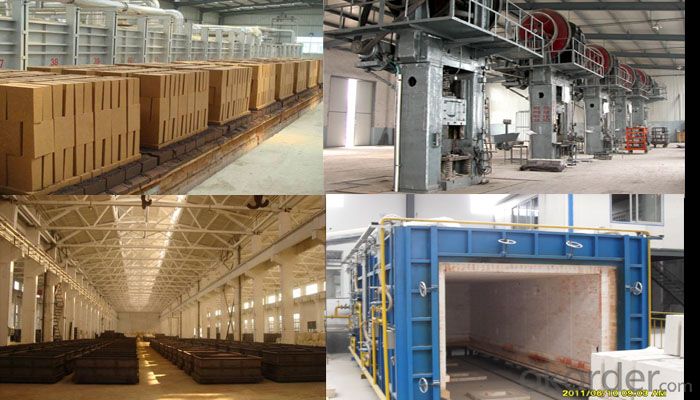
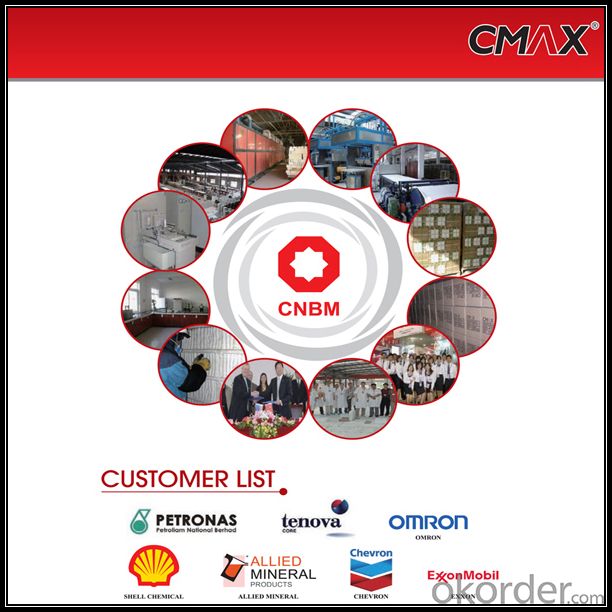
FAQ
1. Which products do you have?
We have all kinds of refractory brick, castable, mortar, cement, ceramic fiber products, etc.
Or you could browse our products to choose what you need.
2. Can you give me a brief introduction of the application of your products?
We are mainly specializing in the refractory materials in iron and steel, cement, glass, ceramics, petrochemical, electric power Industry, etc.
3. If I need your offer, what information do you need?
In order to choose suitable products, it will be appreciated to provide us the information, such us specification, technical data, order quantity, products application etc. If any question, please contact us freely.
- Q:Can insulating fire bricks be used in the construction of thermal insulation floors?
- Insulating fire bricks are indeed suitable for the construction of thermal insulation floors. These bricks are specifically designed to possess low thermal conductivity, enabling them to effectively impede heat transfer. Consequently, they are an excellent selection for thermal insulation purposes, including floors. The utilization of insulating fire bricks in the construction of thermal insulation floors can greatly decrease heat loss from the floor, resulting in enhanced energy efficiency and cost savings. Furthermore, these bricks are lightweight and easy to install, making them a practical option for construction projects. All in all, insulating fire bricks offer a suitable and effective means of incorporating thermal insulation into floors.
- Q:Can insulating fire bricks be used in the construction of foundry molds?
- Insulating fire bricks are capable of being utilized in the construction of foundry molds. These bricks are produced using lightweight materials like clay, alumina, and silica, and are specifically designed to possess low thermal conductivity. This quality renders them ideal for various applications that necessitate resistance against high temperatures and insulation, particularly foundry molds. Foundry molds are employed to shape and retain molten metal during the casting procedure. Given that molten metal is generally poured at exceedingly high temperatures, it becomes imperative to employ materials that can endure the heat without melting or distorting. Insulating fire bricks possess a high melting point and exceptional thermal stability, making them appropriate for usage in foundry molds. Furthermore, apart from their resistance to high temperatures, insulating fire bricks also offer commendable insulation properties. This proves to be crucial in foundry molds as it assists in regulating the cooling rate of the molten metal, thereby preventing thermal shock and ensuring proper solidification. The insulation properties of insulating fire bricks also contribute to lowering energy consumption and enhancing the overall efficiency of the foundry process. All in all, insulating fire bricks are an enduring and efficient choice for the construction of foundry molds. They provide resistance against high temperatures, excellent thermal stability, and reliable insulation properties, thus establishing themselves as a dependable option for employment in the demanding conditions of foundry operations.
- Q:Can insulating fire bricks be used as insulation in walls and roofs?
- Yes, insulating fire bricks can be used as insulation in walls and roofs. They have excellent thermal insulation properties, high heat resistance, and are specifically designed for use in high-temperature environments.
- Q:Can insulating fire bricks be used for kiln furniture?
- Indeed, kiln furniture can be fashioned from insulating fire bricks. These bricks are specifically engineered to endure extreme temperatures and are frequently employed in industrial kilns and furnaces. Their exceptional thermal insulation characteristics render them perfect for crafting kiln furniture like shelves, posts, and supports. The insulating attributes of these bricks aid in the uniform dispersion of heat throughout the kiln, guaranteeing consistent heating of the items being fired. Furthermore, insulating fire bricks possess a lightweight composition and are effortlessly manageable, thereby making them a convenient selection for kiln furniture.
- Q:Can insulating fire bricks be used in biomass boilers?
- Yes, insulating fire bricks can be used in biomass boilers. Insulating fire bricks are designed to have low thermal conductivity, which helps to retain heat within the boiler and increase its overall efficiency. In biomass boilers, these bricks can be used to line the combustion chamber, helping to keep the heat inside and prevent it from escaping. Additionally, insulating fire bricks can withstand high temperatures, making them suitable for use in biomass boilers where combustion temperatures can reach several hundred degrees Celsius. Overall, the use of insulating fire bricks in biomass boilers can enhance their thermal efficiency and contribute to a more efficient and sustainable energy production process.
- Q:Can insulating fire bricks be used in the construction of cremation chambers?
- Yes, insulating fire bricks can be used in the construction of cremation chambers. Insulating fire bricks are made from lightweight materials, such as vermiculite or perlite, which have excellent insulating properties. These properties make them suitable for high-temperature applications, such as cremation chambers, where they can help maintain a consistent and controlled temperature. Using insulating fire bricks in the construction of cremation chambers can provide several benefits. Firstly, they can help to improve energy efficiency by reducing heat loss. This can result in lower fuel consumption and cost savings. Secondly, the insulating properties of these bricks can help to maintain a stable temperature inside the cremation chamber, which is important for ensuring efficient and complete combustion of the deceased. Additionally, insulating fire bricks are lightweight and easy to handle, which can make the construction process more convenient and efficient. However, it is important to note that while insulating fire bricks can be used in the construction of cremation chambers, they are typically used in combination with refractory fire bricks. Refractory fire bricks are made from materials, such as clay or silica, that can withstand extremely high temperatures. These bricks are used in the areas of the cremation chamber that experience direct contact with the flames, while insulating fire bricks are used in the areas that require insulation. Overall, insulating fire bricks are a suitable choice for the construction of cremation chambers, as they provide excellent thermal insulation and can contribute to the efficient and controlled operation of the cremation process.
- Q:Can insulating fire bricks be used for insulation in heat recovery systems?
- Indeed, insulating fire bricks have the capability to serve as insulation within heat recovery systems. These bricks are specially crafted to endure elevated temperatures and deliver efficient thermal insulation. By possessing low thermal conductivity, they possess the ability to reduce heat dissipation and enhance heat recovery within a system. Consequently, they are frequently implemented in diverse industrial settings, including kilns, furnaces, and ovens, where temperature regulation and energy efficiency are paramount. Therefore, these bricks present a viable option for insulating heat recovery systems, facilitating the optimization of waste heat recovery and utilization.
- Q:Do insulating fire bricks require special installation techniques?
- Yes, insulating fire bricks do require special installation techniques. These bricks are designed to withstand high temperatures and provide insulation, so proper installation is crucial to ensure their effectiveness. Special attention needs to be given to factors such as mortar selection, brick alignment, and proper curing to achieve optimal thermal performance.
- Q:Can insulating fire bricks be used in refractory coatings?
- Indeed, refractory coatings can indeed utilize insulating fire bricks. The primary purpose of insulating fire bricks is to possess a low level of thermal conductivity, rendering them highly effective for insulation purposes. By incorporating insulating fire bricks into refractory coatings, the potential for heat loss is minimized, thereby enhancing energy efficiency. Moreover, these bricks have the capacity to withstand exceedingly high temperatures, making them ideal for refractory coatings that are subjected to extreme heat. However, it is crucial to thoroughly assess the specific requirements and characteristics of the refractory coating, as well as the intended application, to ascertain that insulating fire bricks are the most appropriate selection.
- Q:What industries commonly use insulating fire bricks?
- Insulating fire bricks find widespread use in diverse industries that require high-temperature insulation. Some of the sectors that commonly utilize these bricks are: 1. Steel industry: Furnaces, kilns, and other equipment in steel manufacturing plants are lined with insulating fire bricks to enhance insulation, minimize heat loss, and optimize energy efficiency. 2. Glass industry: Insulating fire bricks are employed in furnaces and ovens where glass is melted and molded. They maintain high temperatures, minimize heat loss, and ensure consistent and efficient production. 3. Ceramic industry: Ceramic kilns and pottery ovens rely on insulating fire bricks for thermal insulation, which helps maintain the desired temperature for clay and ceramic products. These bricks conserve energy and optimize firing processes. 4. Cement industry: Cement kilns require efficient high-temperature insulation, achieved through the use of insulating fire bricks. They line the kilns, reducing heat loss and improving thermal efficiency. 5. Foundry industry: Foundries use insulating fire bricks to line melting furnaces and ovens for metal casting. These bricks retain heat, ensuring consistent and efficient metal melting. 6. Power generation industry: Boilers, furnaces, and incinerators in power plants benefit from the thermal insulation provided by insulating fire bricks. They prevent heat loss, improving overall power generation efficiency. 7. Petrochemical industry: Refineries and chemical processing plants rely on insulating fire bricks to line reactors, furnaces, and ovens. These bricks offer insulation against high temperatures and harsh chemical environments. 8. Pharmaceutical industry: Insulating fire bricks are used in pharmaceutical manufacturing facilities to line ovens and dryers. They enable precise temperature control and enhance energy efficiency. In conclusion, insulating fire bricks have wide-ranging applications in industries that emphasize the importance of high-temperature insulation for efficient and cost-effective operations.
1. Manufacturer Overview |
|
|---|---|
| Location | |
| Year Established | |
| Annual Output Value | |
| Main Markets | |
| Company Certifications | |
2. Manufacturer Certificates |
|
|---|---|
| a) Certification Name | |
| Range | |
| Reference | |
| Validity Period | |
3. Manufacturer Capability |
|
|---|---|
| a)Trade Capacity | |
| Nearest Port | |
| Export Percentage | |
| No.of Employees in Trade Department | |
| Language Spoken: | |
| b)Factory Information | |
| Factory Size: | |
| No. of Production Lines | |
| Contract Manufacturing | |
| Product Price Range | |
Send your message to us
Fireclay Bricks High Alumina Refractory Brick
- Loading Port:
- China main port
- Payment Terms:
- TT OR LC
- Min Order Qty:
- 1 m.t
- Supply Capability:
- 2500 m.t/month
OKorder Service Pledge
OKorder Financial Service
Similar products
New products
Hot products
Related keywords
